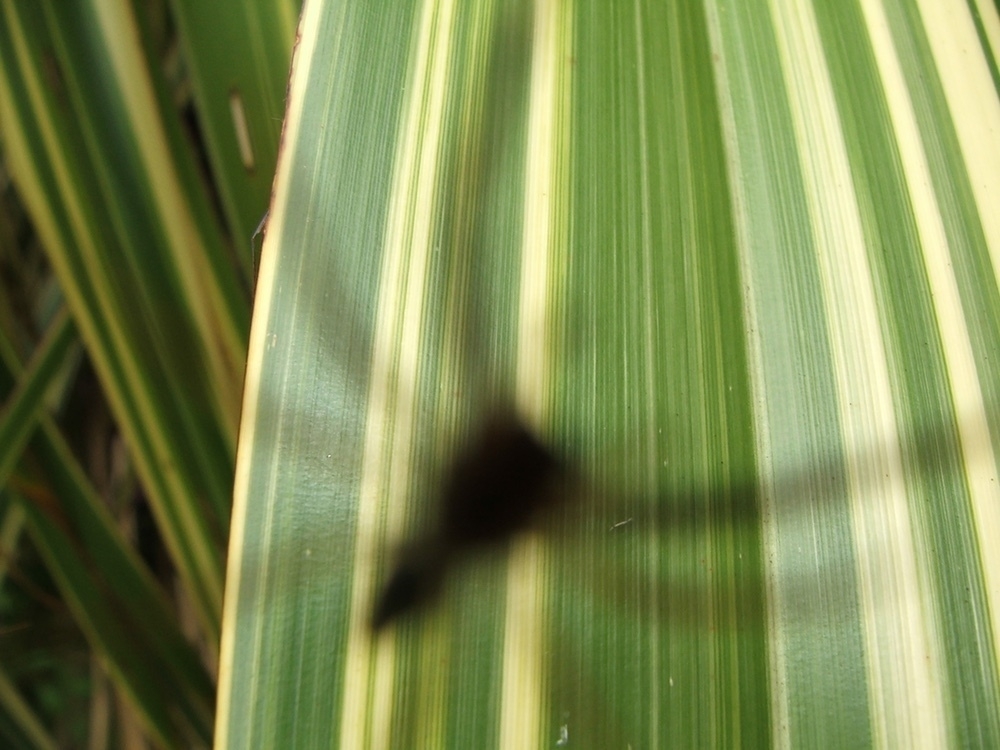Favourite spider family, that is. Salticids are more commonly known as jumping spiders.
Like this chirpy little chappie:

R. found him(?) this afternoon on the last of our variegated flaxes and called me over to take the requisite photos. I’d not see one like this before: more slender than the black-armed jumping spider (Trite planiceps) that he most resembled, and having a bright orange head besides.
Checking it out later, my usual NZ spider bible (Forster & Forster’s Spiders of New Zealand) could offer no clues, although B₂ and R₂ thought it looked a bit like Aussie import Helpis minitabunda. I’m not so sure, as it didn’t really correspond to examples I later found on the web. Even so, our orange headed friend is the fifth species of salticid in our garden I’ve found so far. Fantastic!
Anyway, I took several photos, getting closer each time. The thing about these guys, is that they don’t always run away.
In fact quite the opposite, as this photo shows.

And it’s that sort of behaviour that is so endearing. Instead of running, many salticids wheel around to face any human approaching, presumably scanning for anything resembling prey with their acute eyesight. That’s why you get so many face shots of salticids on Flickr.
Often, when they meet each other, they go through quite elaborate greeting rituals too. Particularly in the summer months, the males of the black armed variety wander about inside our house, occasionally bumping into each other and having a bit of a staredown. Always entertaining. I know I’m anthropomorphising, but it’s hard to avoid when encountering these spiders.
And lastly, they are relatively common. They’re among the first animals our daughters ever took special notice of (with both Trite planiceps and Trite auricoma having their own nicknames in our house) and as such can always be relied upon for some diversion on a slow day.
So keep an eye out.